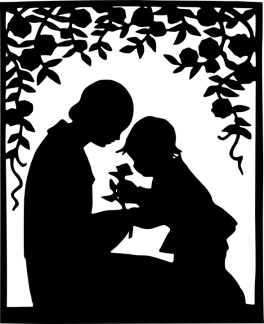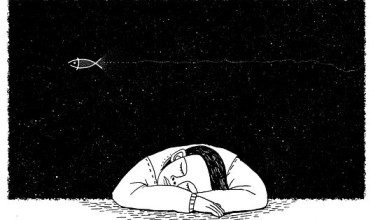
Désirée’s Baby by Kate Chopin is a powerful tale that grapples with the prevalent issues of slavery, racism, gender, class, and identity exhibited in full force through her compelling writing. The story is an exposition of the consequential effects of mixed ancestry and prejudices accompanying it that defined a person’s identity and thus his/her stature in society.
Kate Chopin was an acclaimed American writer who focussed her works around the hardships women had to endure during the 19th century. Famous for her short stories, “Désirée’s Baby” was first published in 1893 in Vogue with the plot set in the antebellum South.
Désirée’s Baby | Summary
This is a story about a woman named Désirée whose mother Madame Valmondé is on a visit to her daughter’s house in L’Abri on the account of the birth of her grandson. The Valmondés belong to the wealthy French Creole class in southern America and Désirée is their adopted daughter who they adore and love wholeheartedly. Armand Aubigny, a man from the same class falls in love with Désirée irrespective of the ambiguous origins she possesses which are unknown to the woman herself.
Madame Valmondé’s astonishment on observing the baby’s face does not alarm her daughter. Instead, she revels in the great fortune of happiness and affection the baby brings to her life through her husband’s unwavering attention to her. He even monitors his behavior towards the slaves working on his plantations after the birth of his son. However, after a few months, all the love and merriment vanish, and Armand’s deliberate distancing from his wife comes to the light.
Désirée’s confrontation with her husband one night after a careful examination of her son leads her to face the truth of black blood running in her child which Armand accuses as a consequence of Désirée’s mixed heritage. The taboo of belonging to the slave community ruins her relationship forever and after learning the possibility of her black ancestry from the vague response of her mother in a letter, she decides to leave her house and her husband and ends her life along with her son. A metaphorical death of her wife and son through the burning of their belongings by Armand follows their physical death. The story ends with a plot twist revealing Armand’s knowledge about his own mixed ancestry that was passed down to his son through a letter from his mother, as he sets to burn down the proof as well.
Désirée’s Baby | Analysis
Chopin’s narrative has a third-person omniscient narrator who narrates the life events of Désirée up until her death. A woman of ambiguous origins, she is adopted by Madame Valmondé, a French noble in the Creole Louisiana. This facilitates an intermingling of races and classes, knowingly and unknowingly. The treatment of the slaves by the plantation-owning classes has never been an issue hidden under wraps. Enough literature has been produced to date that rendered voice to the then marginalized and powerless community. But Chopin in her take on the issue imposes a thrust on the stereotypical behavior people of color who hailed from a mixed ancestry typically called mulattos, had to endure. While this offensive and racial categorization stood for the immediate offspring of parents who were black, subsequent generations were also subjected to ruthless discrimination as they had a drop of black blood running through their veins.
The plantation setting in the story of L’Abri as a “sad looking place” serves the purpose of enforcing the binaries of dark and white with its black roofs juxtaposed with Désirée’s “white muslins.” The presence of violence such places ensure towards the black slaves also foreshadows the emotional violence Désirée was going to be subjected to later on. Her unknown ancestry turns out to be a shred of evidence for the crime she does not commit—the crime of hampering her husband’s reputation and lineage. The truth which Armand readily ignores at the time of his marriage transforms into a sword stabbing their relationship. In the gendered sphere, the onus of a family’s name lies more on a woman than a man.
The twist at the end of the story reveals Armand to be of mixed origins and surely responsible for his son’s darker skin tone. However, it does not clear Désirée’s position in a similar race. While the narrator specifies the proof for Armand’s involvement, the lack of the same proof does not put Désirée in the light of descent of pure white blood. But it does allow space for her to not appeal guilty which her husband refuses to give. A woman has to always prove herself and the act of burning his mother’s letter towards the end gives an impression of Armand possibly knowing the truth way before Désirée leaves her house along with their son, to continue living his life without any accusations and thus without any threat to his status and power.
For Armand, it was acceptable to let his wife and son leave his house and hence his life with a possibility of death but not to lose his authority over the slaves to whom, as it happens, his mother was born. The setting of the story in the years before the Civil War becomes an apt choice for the exhibition of gendered and race-biased prejudices in the southern parts of the States. Armand is a strict ruler who deprives his workers of all sorts of happiness as the narrator observes “under [Armand Aubigny]… negroes had forgotten how to be gay.” This unhappiness becomes the key to the slaves’ rebellion in the subsequent years. Plantations were the major source of income in the southern states and thus the vehicle of luxury for families like Aubignys. Désirée’s blind obedience towards her husband is conceivable to her desperation to stick to the wealth and status that his name brings to her which is why the innocent Désirée might have been turning a blind eye to her husband’s likely affair with La Blanche or maybe other slave women as well. The knowledge of her unsure parentage pins her against the twin pressures of race and gender. Ambivalence provides the narrative an air of mystery that tempts one to uncover the secrets of origins and parentage which is crucial for one’s identity in a segregationist nation like America at that juncture.
Chopin’s target to navigate the theme of identity through race and gender constraints is a classic method to portray women of her period who were not strong enough to transcend boundaries. She paints her characters in the light of realism where rebelling is not always a solution, though it was an option for Désirée. Her mother was willing to allow her to come back and stay with her son but her daughter chooses to end her life along with her son to escape the lifelong torment of the truth about her ancestry and a consequential rebuttal of her husband. Her identity like many others was limited to the blood that ran inside her and not to her white skin. The dictates of such social structure did not allow a seamless blending of races and classes and both Désirée and her son become its victims.
Désirée’s Baby | Characters
Désirée – The titular protagonist, she is a beautiful woman adopted by a wealthy French Creole family and married to Armand Aubigny who is head over heels in love with her at the beginning of the story. Her fate bestows her to live a luxurious life despite being abandoned as a child. Upon her son’s birth, the difference in his skin color reveals his black lineage, and her husband holding her accountable for it, drives her to leave him forever. Unable to compromise with the situation, she ventures into a deserted field, never to return.
Madame Valmondé – A wealthy woman from the French lineage, she adopts Désirée as a sign of divinity when was found “lying asleep in the shadow of the big stone pillar” near her house. It is she who observes the unusual appearance of her grandson but refutes from specifying her doubts. Her love for her daughter is pure which comes to display through a letter that she writes to Désirée offering her to come back along with her son.
Armand Aubigny – Belonging to a wealthy Creole family, he is a handsome man who falls in love with Désirée at first sight. His initial repose to Désirée’s “obscure origins” renders him an appealing personality but to protect his masculine ego and reputation, he uses the same “obscure origins” to abandon his wife and son later on in the story. His position as a male and an owner of a plantation having control over the slaves accords him the power to accuse and treat people according to his whims. The revelation of his mother’s ancestry lying in the ranks of the slaves towards the end as an inclusion of the plot twist attributes hypocrisy to people like him who pass off as whites even though carrying black blood in them for which they rebuke others.
Zandrine – She is a black woman who is the personal caretaker of Désirée and her son.
La Blanche – She is a servant who is referred to only in passing but holds contextual importance when Armand sarcastically remarks Désirée’s hand to be as white as hers, implying an accusation of mixed origins. Even though La Blanche is white, she has ancestors who belonged to the slave community and hence is also a slave in Aubigny household. There is also an implicit suggestion about Armand’s affair with her when Désirée innocently remarks her son’s loud cries have reached his father’s ears “as far away as La Blanche’s cabin.”
Désirée’s Baby | Literary Devices
Allusion – The Biblical fallen angel generally viewed as evil and sinful is referred to describe Armand Aubigny’s conduct: “And the very spirit of Satan seemed suddenly to take hold of him in his dealings with the slaves.”
Hyperbole – “That was the way all the Aubignys fell in love as if struck by a pistol shot.”
Symbolism –
Fire – It symbolizes passion which transforms in its nature over the course of the story. Prior to their marriage, Armand’s love for Désirée burnt like the “prairie fire” signaling the expanse, intensity, and uncontrollability of his desires. Later, when he burns down the material possessions of his wife and son, the fire there becomes a symbol of fuming hate and anger.
Irony – Désirée was blamed by her husband for the infiltration of their son’s blood but it was his mixed ancestry that was to be held responsible.
Simile – “The passion that awoke in him that day, when he saw her at the gate, swept along like an avalanche, or like a prairie fire, or like anything that drives headlong over all obstacles.”
“Big, solemn oaks grew close to it, and their thick-leaved, far-reaching branches shadowed it like a pall.”
“The baby, half naked, lay asleep upon her own great mahogany bed, that was like a sumptuous throne, with its satin-lined half-canopy.”
“The blood turned like ice in her veins”
Foreshadowing – The narrator drops certain hints that predict the involvement of Armand in his son’s appearance and complexion different than that of his parents— “But Armand’s dark, handsome face had not often been disfigured by frowns since the day he fell in love with her” and “Look at my hand; whiter than yours, Armand…”



